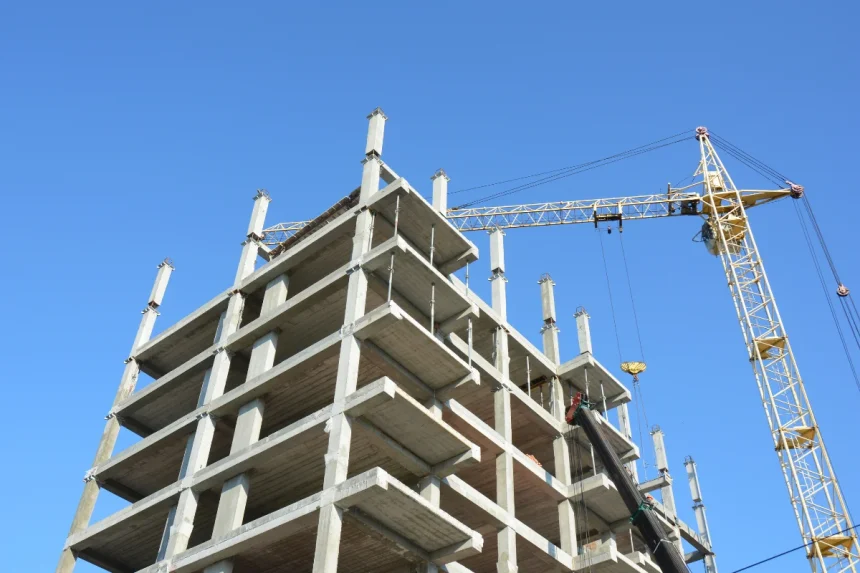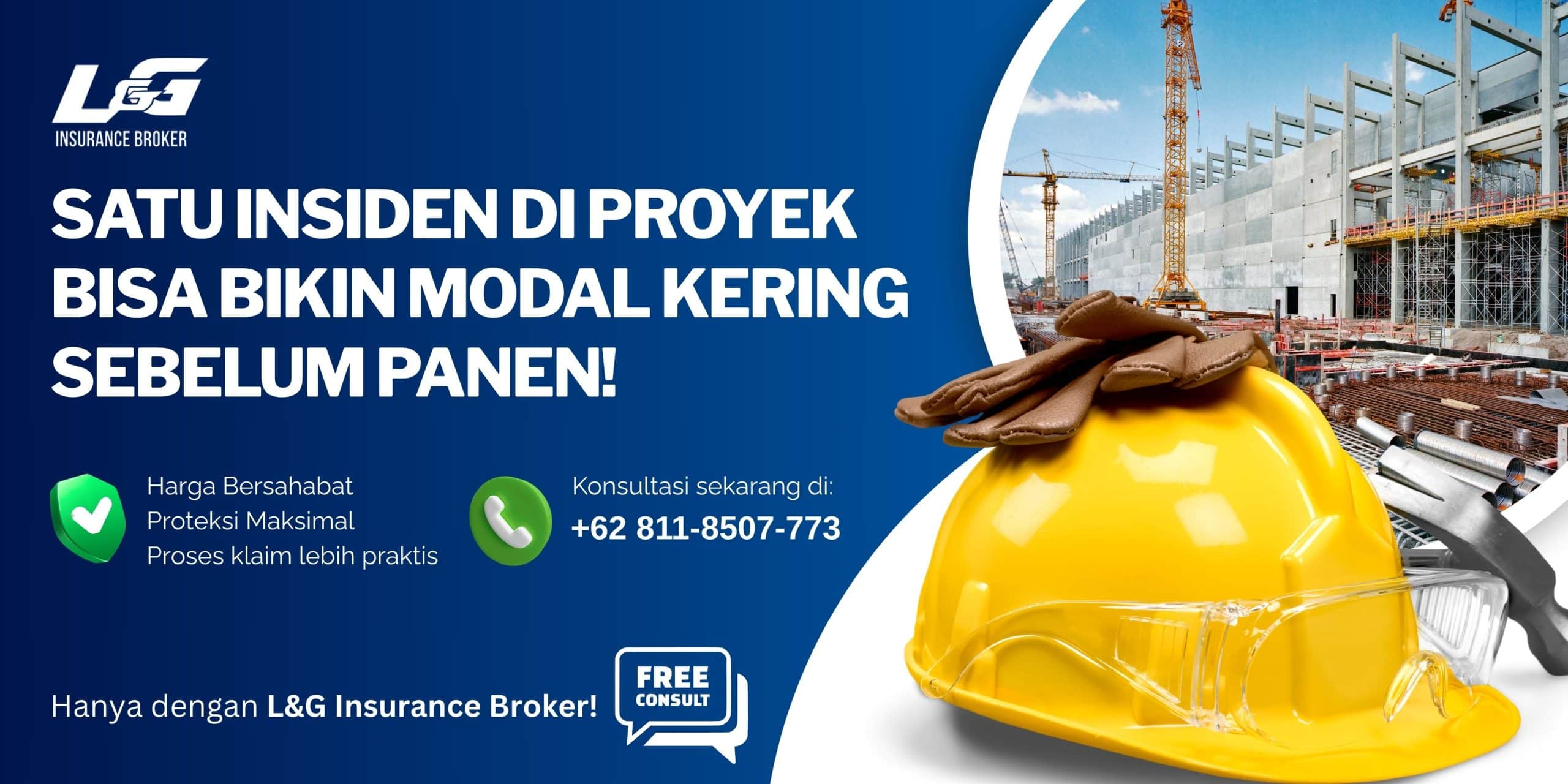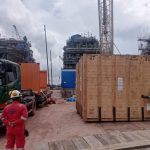Liga Asuransi – Owners, contractors and project consultants, how are you? May you and your business always run smoothly. As usual, in this blog we focus on discussing risk management and insurance. This time, we will discuss How to Choose a Policy Construction Insurance The Right One for Your Project. Choosing appropriate insurance is very important to protect the project from various risks such as damage, accidents or legal claims. If this article is useful, please share it with your colleagues. Don’t forget, you can also find hundreds of other articles about project insurance on this blog!
Construction projects are always faced with various risks, ranging from physical damage due to natural disasters, work accidents, delays in project completion, to lawsuits from third parties. These risks can cause large financial losses for contractors and project owners, and even have the potential to hinder the continuity of development. Therefore, financial protection through project insurance is a crucial aspect in every construction project.
Project insurance not only provides protection against damage to buildings or materials, but also protects against legal claims, technical failures and contractor default. Police like Construction All Risk (CAR), Erection All Risk (EAR), Third-Party Liability Insurance, and Performance Bond ensure the project continues even if unexpected events occur.
Choosing the best construction insurance policy is not an easy task. Contractors and project owners must understand the types of risks they face, the insurance coverage required, and common mistakes to avoid when choosing a policy. This article will provide a complete guide to help you choose the right project insurance, so that the project can run smoothly with optimal protection.
Factors to Consider in Choosing Project Insurance
Choosing the right construction insurance policy is an important step to ensure the project runs smoothly and is protected from various risks. There are several main factors that must be considered before choosing project insurance, starting from the type of project, the risks faced, the type of policy required, to the applicable regulations. The following are factors that must be considered when choosing the best project insurance.
- Types of Projects and Risks Faced
Every construction project has different characteristics and risks. Therefore, the choice of insurance policy must be adjusted to the type of project currently underway.
- Building Construction Projects → Main risks include structural failure, fire and work accidents.
- Infrastructure Projects (Roads, Bridges, Dams, Airports) → Risks such as natural disasters, delays in completion, and construction vehicle accidents must be taken into account.
- Industrial Installation Projects (Power Plants, Oil Refineries, Factories) → Involve the installation of heavy equipment that is susceptible to mechanical and electrical faults.
The main risks to be aware of in any project include:
- Natural disasters (earthquakes, floods, hurricanes) that can damage the project structure.
- Work accidents, including falls from heights or being hit by construction materials.
- Theft of materials, especially on projects with high-value materials such as steel and electrical cables.
- Contractor default, which can cause project delays and increased costs.
- Type of Insurance Policy Required
Based on the type of project and risks faced, here are the types of construction insurance policies to consider:
Used for civil construction projects such as buildings, roads and bridges.
Provides protection against physical damage due to accidents, natural disasters, or theft.
- Erection All Risk (EAR) Insurance
Used in projects involving the installation of mechanical and electrical equipment such as power plants and factories.
Protects against the risk of installation failure, damage due to testing, and technical errors in installation.
Provides protection against claims from third parties, such as property damage around the project or injuries resulting from construction activities.
Very important for architects, engineers and project consultants.
Covers risks resulting from errors in design calculations, incorrect technical specifications, or poor project planning.
- Performance Bond dan Surety Bond
Performance Bond guarantees that the contractor completes the work according to the contract.
A Surety Bond protects the project owner if the contractor fails to complete the project according to the agreed schedule or specifications.
Choosing a combination of several policies will provide maximum protection against all potential risks faced in a construction project.
- Amount and Duration of Coverage
Determining the correct coverage amount is essential to ensure the project has sufficient protection in the event of damage or financial loss. Things to consider include:
- The insurance amount must be sufficient to cover all potential project risks, including material, labor and equipment costs.
- Adjusting the policy duration to the project schedule. If the project experiences an extension of time, the insurance must also be extended so that protection continues.
- The policy should cover a project testing and handover period, especially in industrial projects involving machinery and equipment that must be tested before being fully operational.
- Contractors and project owners often overlook this factor, which can result in insurance claims being denied if the policy is expired or coverage is insufficient.
- Contract Regulations and Requirements
In many projects, especially large projects funded by the government or the private sector, there are mandatory requirements regarding insurance.
- Government Projects: Usually require contractors to have Construction All Risk (CAR), Performance Bond, and Third-Party Liability Insurance.
- Private Projects: Project owners often require contractors to have Professional Indemnity Insurance if the project involves technical design and planning.
- Industry Regulations: Some sectors, such as energy and infrastructure, have specific regulations regarding project insurance that must be complied with in order for contractors to win tenders.
- Ensuring compliance with regulatory and contractual requirements is essential for projects to run smoothly without administrative obstacles.
Comparison of Several Construction Insurance Policies
In construction projects, choosing the right insurance policy is very important to ensure optimal protection against various risks that may occur. There are several types of insurance designed specifically for construction projects, each with different coverage and benefits. Below is a comparison of several insurance policies commonly used in the construction industry.
Construction All Risk (CAR) vs. Erection All Risk (EAR)
Equality
Both Construction All Risk (CAR) and Erection All Risk (EAR) have the same main goal, namely protecting construction projects from the risk of physical damage and accidents during the construction process. These two policies cover:
- Damage resulting from natural disasters such as earthquakes, floods and hurricanes.
- Damage resulting from human error, such as worker negligence or technical errors.
- Fire, explosion, or theft of project materials which can cause delays in completion.
Difference
Construction All Risk (CAR) Insurance
- Used for civil construction projects, such as buildings, bridges, toll roads, dams and airports.
- Focus on damage to the physical structure of the project during the construction process.
- Typically required in large project contracts to protect the project owner and contractor.
Erection All Risk (EAR) Insurance
- Used for projects involving the installation of mechanical, electrical, and electronic equipment, such as power plants, factories, and oil refineries.
- Focus on the risk of installation failure, mechanical error, or equipment damage during testing.
- Essential for projects that require testing and commissioning before full operation.
Third-Party Liability Insurance vs. Professional Indemnity Insurance
- Third-Party Liability Insurance
- Protects contractors from third party claims resulting from property damage or injuries that occur during the project.
- If the project causes damage to nearby buildings due to vibration or errors in the work, the property owner can file a claim against the contractor.
- It also includes accidents experienced by people around the project, such as pedestrians who are hit by materials falling from buildings under construction.
- Professional Indemnity Insurance
- Specially designed for architects, engineers and project consultants who are responsible for the design and technical planning of projects.
- Provides protection against claims resulting from structural calculation errors, design errors or planning failures.
- For example, if an engineer miscalculates the durability of a material, causing a building to crack after the project is completed, the project owner can demand compensation for the loss.
Conclusion:
- Third-Party Liability Insurance focuses more on risks that occur during project implementation.
- Professional Indemnity Insurance covers mistakes in the planning stage that can impact the project in the long term.
Performance Bond dan Surety Bond
- Performance Bond
- Guarantee that the contractor will complete the project according to the agreed contract.
- If the contractor fails to fulfill its obligations, the project owner can file a claim to obtain funds to complete the project with another party.
- Usually required in large projects, especially those financed by the government or private investors.
- Surety Bond
Different from a Performance Bond, a Surety Bond is a guarantee given by a surety company to the project owner.
- If the contractor fails to complete the project, the guarantee company will provide compensation or appoint another contractor to complete the work.
- Used to protect project owners from the risk of default or contractor default.
Conclusion:
Performance Bonds focus more on guaranteeing project completion, while Surety Bonds focus more on financial protection for the project owner if the contractor fails to fulfill the contract.
Benefits of Combining Several Insurance Policies
In order to optimize project protection, the use of a combination of several insurance policies is highly recommended.
- CAR + Third-Party Liability Insurance
Combines protection against physical damage to the project and legal liability to third parties.
Ideal for large building and infrastructure construction projects that pose a risk of causing disruption to surrounding properties.
- EAR + Professional Indemnity Insurance
Combines protection against industrial equipment installation risks and technical design errors.
Suitable for power plants, oil refineries and heavy industrial projects that require complex planning and installation.
- Performance Bond + Surety Bond
Provides a guarantee of project completion as well as financial protection for the project owner if the contractor fails to complete the work.
Ideal for large projects with tight financing schemes.
Choosing the right construction insurance policy is very important to protect the project from various risks. Construction All Risk (CAR) and Erection All Risk (EAR) offer protection against physical project damage, while Third-Party Liability Insurance and Professional Indemnity Insurance help protect against legal claims and design errors. In addition, Performance Bonds and Surety Bonds provide financial guarantees so that the project can proceed as planned.
Using a combination of several insurance policies will provide maximum protection and ensure the project runs smoothly without major financial risks.
To get a policy that suits your project needs, working with a professional insurance broker like L&G Insurance Brokers is the best step. L&G Insurance Broker will help you get optimal coverage at competitive premiums, ensuring that your project has the best protection.
Don’t take risks in your projects! Contact L&G Insurance Brokers now for a free consultation and the best construction insurance solutions! 🚀
Common Mistakes to Avoid when Choosing a Construction Insurance Policy
Choosing the right construction insurance policy is an important step in ensuring the project is protected from various risks that could hinder work completion. However, many contractors and project owners make mistakes in selecting insurance which can result in rejected claims, financial losses, or project delays. Here are some common mistakes that often occur and how to avoid them.
- Not choosing a policy that suits the type of project
One of the biggest mistakes is choosing a policy based solely on price without considering the coverage the project actually requires. Each project has different characteristics and risks, so it requires an appropriate type of insurance.
Examples of common mistakes:
Use Construction All Risk (CAR) for industrial equipment installation projects, which should use Erection All Risk (EAR). CAR focuses more on civil projects such as building and road construction, while EAR covers the risks of installing mechanical and electrical equipment.
Ignoring the need for Third-Party Liability Insurance in urban projects where there is a high risk of claims from property owners around the project.
How to avoid:
Make sure the policy you choose is appropriate to the type of project and the main risks faced.
Discuss insurance needs with a professional insurance broker to ensure proper coverage.
- Not Understanding Exceptions in Police
Many contractors only read the policy summary without paying attention to the exclusions written in the policy document. This can cause the claim to be rejected because the risk that occurs is not covered by the policy.
Examples of common mistakes:
Thinking that a CAR or EAR policy covers all types of risks, even though some policies do not cover design failures or structural miscalculations. For this risk, Professional Indemnity Insurance is required.
Not realizing that some policies do not cover damage resulting from the use of defective materials, so if there is a problem with the materials used in the project, the repair costs will not be covered.
How to avoid:
- Carefully read the exclusions section in the insurance policy.
- Consult with an insurance broker to clearly understand what is and is not covered in the policy.
- Not Renewing the Policy According to Project Progress
In construction projects, changes often occur such as project expansion, extension of work duration, or additions to contract value. If insurance policies are not updated in accordance with these changes, insurance coverage may become insufficient or even invalid.
Examples of common mistakes:
The insurance policy is only valid for 12 months, but the project experienced delays of up to 6 months without an insurance extension. As a result, for the past 6 months, the project has had no insurance coverage.
The coverage value in the policy is not updated when there is an escalation in material prices or additional work, so that in the case of a claim, the value paid by insurance is insufficient.
How to avoid:
- Evaluate the policy periodically as the project progresses.
- Make sure the policy duration matches the actual project schedule, including potential time extensions.
- Report any significant changes to your insurance provider or broker to make coverage adjustments.
- Not Taking Advantage of Help from an Insurance Broker
Managing project insurance independently without the help of a broker often results in choosing the wrong policy or paying more expensive premiums without getting optimal protection. Insurance brokers have expertise in assessing risk, comparing different offers from insurance companies, and assisting in claims management.
Examples of common mistakes:
- Contractors choose a policy from one insurance company without comparing it to other options, which may offer broader coverage at more competitive premiums.
- Not understanding the additional benefits that can be obtained from the policy, such as legal assistance for claims from third parties or additional financial protection for contractors.
How to avoid:
- Use the services of an experienced insurance broker, such as L&G Insurance Broker, to get the best policy according to project needs.
- Compare several policy options before making a decision.
Selecting the right construction insurance policy requires an in-depth understanding of the type of project, policy coverage, and exclusion provisions. Mistakes in choosing insurance can cause major financial losses if an incident occurs on the project. Therefore, it is important for contractors and project owners to avoid common mistakes such as choosing an inappropriate policy, ignoring exclusions, not renewing a policy, and not utilizing the help of an insurance broker.
Working with a professional insurance broker like L&G Insurance Brokers will ensure your project has optimal protection at the best price.
Don’t let mistakes in choosing insurance hinder your project! Contact L&G
The Need to Use Insurance Broker Services in Construction Projects
In construction projects, choosing the right insurance policy is a crucial step to protect the project from various risks such as physical damage, work accidents, delays and third party claims. However, understanding policy details, coverage and exclusions can be very complex. This is where the role of insurance brokers becomes very important.
Insurance brokers are professionals who help contractors and project owners in choosing the best policy according to project needs. They have access to multiple insurance companies and can compare premiums and policy coverage to get optimal protection at competitive prices.
In addition, insurance brokers also assist in claims management, ensuring that claims are processed quickly and accurately. With their experience in handling various construction projects, brokers can provide the best recommendations so that contractors do not suffer losses due to policy mismatches with project risks.
Using broker services such as L&G Insurance Brokers will ensure your project gets optimal insurance protection, regulatory compliance, and professional support at every stage of the project.
Don’t risk it! Contact L&G Insurance Brokers now for a free consultation and the best construction insurance solutions! 🚀
Conclusions and Recommendations
Choosing the right project insurance is an important step for contractors and project owners to protect their investment from risks that could hinder work completion. Risks such as physical damage, work accidents, third party lawsuits, and contractor default can cause major losses if not covered by appropriate insurance. Therefore, having the right insurance coverage is essential to keep the project running smoothly without financial constraints.
To ensure the project has optimal protection, project owners and contractors must consider the type of project, coverage amount, and applicable regulations. Policies such as Construction All Risk (CAR), Erection All Risk (EAR), Third-Party Liability Insurance, Professional Indemnity Insurance, as well as Performance Bonds and Surety Bonds must be tailored to project needs.
To get the best policy with optimal coverage and competitive prices, working with a professional insurance broker like L&G Insurance Broker is the right solution. With extensive experience in the construction industry, L&G Insurance Broker is ready to assist in policy selection, premium negotiation, and claims management so that your project remains protected.
Don’t let your project go without protection! Contact L&G Insurance Brokers now for a free consultation and get the best construction insurance solutions! 🚀
Looking for insurance products? Don’t waste your time and contact us now
HOTLINE L&G 24 JAM: 0811-8507-773 (CALL – WHATSAPP – SMS)
Website: lngrisk.co.id
Email: oktoyar.meli@lngrisk.co.id
—








![[RECAP WEBINAR: Heavy Eqipment, Heavy Risk]
Dalam industri konstruksi dan pertambangan, alat berat bekerja di lingkungan penuh risiko. Mulai dari perpindahan antar lokasi, operasi di medan ekstrem, hingga potensi kecelakaan dan kerusakan mekanis. Tanpa perlindungan yang tepat, kerugian yang muncul bisa mencapai ratusan juta hingga miliaran rupiah.
Webinar ini membahas secara mendalam:
✅ Risiko utama yang mengancam alat berat di proyek konstruksi & tambang
✅ Jenis perlindungan penting seperti CPM (Contractor’s Plant & Machinery) dan Equipment All Risks
✅ Klausul yang sering terlewat oleh pemilik alat dan perusahaan rental
✅ Peran krusial broker asuransi dalam memastikan penutupan polis tepat dan klaim berjalan mulus
Dengan jaminan asuransi alat berat yang sesuai, operasional proyek Anda tetap aman, efisien, dan terlindungi dari kerugian besar.
📣 Nantikan webinar edukatif berikutnya dari L&G Insurance Broker untuk memperluas wawasan Anda tentang manajemen risiko di industri konstruksi dan alat berat! Follow akun kami dan aktifkan notifikasi agar tidak ketinggalan😉
#webinargratis #onlinewebinar #webinar #AsuransiAlatBerat #HeavyEquipment #CPMInsurance #MiningSafety #BrokerAsuransi #AmanBersamaLNG](https://scontent-yyz1-1.cdninstagram.com/v/t51.82787-15/583486524_18408253015184229_1382819462085136671_n.jpg?stp=dst-jpg_e35_tt6&_nc_cat=105&ccb=7-5&_nc_sid=18de74&efg=eyJlZmdfdGFnIjoiQ0FST1VTRUxfSVRFTS5iZXN0X2ltYWdlX3VybGdlbi5DMyJ9&_nc_ohc=LEFLS1E6-n4Q7kNvwGkDmyY&_nc_oc=AdnNy0zp0yC2tU0WPBFouFKVjuKRuwBFqR0UNGy6wHFxS6WpLLLJGtM4B1Fzr8Mrd17mFA0DjZunYhLtsFuHsij8&_nc_zt=23&_nc_ht=scontent-yyz1-1.cdninstagram.com&edm=ANo9K5cEAAAA&_nc_gid=oSeaLBWaR-XQBec5hvxCrg&oh=00_Afkx-0gMbHtcHjqh0tCatfkjYDi6lnE953VfIoObFA0qhQ&oe=69458CEF)
![[HADIRI WEBINAR GRATIS]
L&G Academy Online Webinar: Heavy Equipment, Heavy Risk! Wajibnya Perlindungan Asuransi Alat Berat bagi Kontraktor dan Pemilik Alat
Dalam proyek konstruksi dan pertambangan, alat berat adalah aset bernilai tinggi yang menjadi tulang punggung operasional. Namun, kerusakan, kecelakaan, atau kehilangan alat di lapangan bisa menimbulkan kerugian besar dan menghentikan pekerjaan di tengah jalan.
Banyak kontraktor dan pemilik alat baru sadar pentingnya asuransi setelah kerugian terjadi. Padahal, perlindungan yang tepat bisa menjadi penyelamat bisnis.
🎙️ Narasumber:
Mhd. Taufik Arifin
CEO & Founder L&G Insurance Brokers
Lebih dari 40 tahun pengalaman menangani asuransi alat berat, marine, dan proyek besar di Indonesia
📅 Rabu, 12 November 2025
🕙 10.00 WIB – selesai
📍 Live via Zoom
💰 GRATIS! Kuota terbatas
🔗 Registrasi di: bit.ly/3JuYYfh
📲 Daftar sekarang sebelum Anda menyesal jadi salah satu yang “baru sadar setelah rugi besar.”
📞 0811-8507-773
#webinargratis #webinaralatberat #onlinewebinar #kelaswebinargratis #mining #miningequipment #heavyequipment #alatberat #heavyequipmentinsurance #CPM](https://scontent-yyz1-1.cdninstagram.com/v/t51.82787-15/572482319_18404442202184229_2761295381299065355_n.jpg?stp=dst-jpg_e35_tt6&_nc_cat=110&ccb=7-5&_nc_sid=18de74&efg=eyJlZmdfdGFnIjoiRkVFRC5iZXN0X2ltYWdlX3VybGdlbi5DMyJ9&_nc_ohc=YBfuRTABJ5wQ7kNvwEW7q4b&_nc_oc=Adkvywr5WKX6XNcVupQZSVipyaZqfSkpP0dNa7mntKR8bncwCn3olM6crU_KE5LbWJpJpmFdBkCbEoW954Tt7cVM&_nc_zt=23&_nc_ht=scontent-yyz1-1.cdninstagram.com&edm=ANo9K5cEAAAA&_nc_gid=oSeaLBWaR-XQBec5hvxCrg&oh=00_AfmiY4iIbjZ5sEt0hfrf_22YP5cfD6B2RXuaavJfW9Hw9g&oe=694586FF)

![[RECAP WEBINAR: Strategi Asuransi yang Tepat untuk Melindungi Risiko Proyek PLTS]
Proyek PLTS, baik Rooftop maupun Floating Solar Farm, menyimpan risiko unik mulai dari gangguan instalasi, cuaca ekstrem, hingga keterlambatan operasional yang bisa menimbulkan kerugian besar.
Webinar kami membahas strategi asuransi yang tepat untuk melindungi proyek Anda dari risiko-risiko ini, termasuk:
✅ Jenis risiko yang harus diperhatikan
✅ Pilihan proteksi dari tahap konstruksi hingga operasional
✅ Peran broker asuransi untuk memastikan polis sesuai karakteristik proyek
Dengan proteksi yang tepat, proyek PLTS dapat berjalan lancar, aman, dan memberikan hasil optimal tanpa khawatir risiko tak terduga.
📣 Jangan lewatkan webinar kami berikutnya dengan topik yang lebih menarik dan penuh insight praktis!
Follow akun kami dan aktifkan notifikasi agar selalu update.
#PLTS #RenewableEnergy #AsuransiProyek #BrokerAsuransi #FloatingSolar #SolarEnergy #RiskManagement #AmanBersamaLnG #GreenEnergy](https://scontent-yyz1-1.cdninstagram.com/v/t51.82787-15/565040657_18401624725184229_5747722940848587674_n.jpg?stp=dst-jpg_e35_tt6&_nc_cat=106&ccb=7-5&_nc_sid=18de74&efg=eyJlZmdfdGFnIjoiQ0FST1VTRUxfSVRFTS5iZXN0X2ltYWdlX3VybGdlbi5DMyJ9&_nc_ohc=e0noSuZP2ykQ7kNvwGYyHVN&_nc_oc=AdkGAAOFx4X9n5E8PNKtMMXUydSIodGVkfqyHYPuiU0Ub_tTVi3xnstncVYWO2HB8SjIchCZ-gajjxDHAstvTvcm&_nc_zt=23&_nc_ht=scontent-yyz1-1.cdninstagram.com&edm=ANo9K5cEAAAA&_nc_gid=oSeaLBWaR-XQBec5hvxCrg&oh=00_AfkjSayHcdH_uRNf3ydYnj5GGr-c-q9zwzde6xA8rhJeeA&oe=69457E41)










